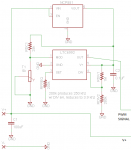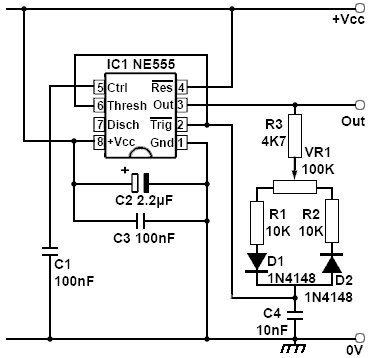rhd
0
- Joined
- Dec 7, 2010
- Messages
- 8,475
- Points
- 0
Although I've added externally adjustable current to drivers before, I'd like to do dimming the "right way" and add externally adjustable PWM.
So, assuming I already have the driver that can take a PWM input, does the design I've put together below look like a valid way to create a ~3.9 khz PWM signal that will vary from 5% to 100% duty cycle based on the position of a 5k pot?

So, assuming I already have the driver that can take a PWM input, does the design I've put together below look like a valid way to create a ~3.9 khz PWM signal that will vary from 5% to 100% duty cycle based on the position of a 5k pot?
- Is there a simpler way? (I guess a 555?)
- Is there a cheaper way? (The approach below requires a $4 IC, plus a second IC to regulate its input voltage to 5V)
- Does anyone think 3.9 khz is the wrong frequency to pulse at?
Attachments
Last edited:







